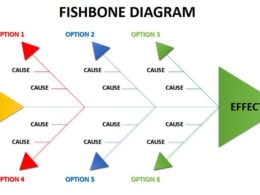Designing a profitable product can be easier when you follow a time tested method.
From the end of World War II until the late 1970’s most Americans spent the majority of their money on basic goods and services with little left for luxury type items.
Giant factories turned out millions of products whose style, color and size were often determined by what made the machines work most efficiently.
There wasn’t much concern about what the customer really wanted.
Japanese auto producers forced reverberating changes in the way consumers went about considering their purchases. Suddenly in the mid-1970’s a flood of cars hit America with features never before available at popular prices. Toyota and Honda revolutionized the concept of “user friendly’ products – incorporating a high standard of quality with easy to use features, all at affordable prices.
Consumers realized that someone did take their interests into consideration when designing products.
In fact, a critical element in Japanese auto production since the late 1960’s has been extensive consumer research and surveying, particularly in the area of durability and reliability needs.
The customer of the 1990’s has learned from buying user friendly products such as Sony televisions, Panasonic stereos, Apple computers and Honda autos that they can be demanding and that manufacturers will respond.
This has produced a new brand of customer that is educated, very aware of prices and very demanding.
She wants quality, variety, durability, excellent service and a very good price all at the same time. She has a mind of her own and will talk about her interests and needs if you ask.
The process of asking customers what they want before you design your product or service is called being “market driven” because you are guided in your product development decisions by the customer’s wishes.
Today the most successful new businesses with profitable products are those that ask enough questions and listen carefully to the answers.
Basic People Needs
It is sometimes frustrating trying to get honest information out of people, because they can’t always express why they buy the way they do. You can bet safely, however, that their need is one of several basic motivations of all people, such as:
- Convenience
- Comfort
- Friendship
- Security
- Status
- Health and Well-Being
- Savings
- Love
- Style
- Profit
When you are trying to figure out your desired customer, put yourself in their shoes and think about what needs would motivate you to buy your product or service.
There are usually two or three primary needs your product or service can satisfy and several lesser needs.
When starting your product/service design, it is critical that you use your market research to focus on the primary needs and wants of your prospective customers.
But it is not enough to just learn about customer needs, you must also use your research to discover how potential customers break down into clusters or “segments.”
Most new businesses do not have the resources to pursue more than two segments at one time. It is essential to your survival that you learn how to narrow down your marketing direction, only then can you be profitable.
Finding Your Niche
The most successful businesses today are highly specialized in the group of customers they serve; for example bookkeeping for public libraries or manufacturers of fashion clothing for dogs.
These tightly focused groups of customers are called “niches” – small but profitable pockets of customers who have similar needs and wants.
Specialization can be scary because you may feel that by narrowing down your market you have too few customers to keep you alive. To avoid this bind, keep several requirements in mind:
- Make sure your niche has more than enough potential customers to allow you to meet your sales goals.
You can estimate this by setting your desired dollar sales level for the first year and dividing it by your best guess at how many dollars a typical sale will produce. For example, if your first year revenue goal is $50,000 and you estimate an average sale will be $100, then you must make 500 sales during the year. Assuming that you stick with a good marketing strategy, you will get repeat business from many of your customers, so that 500 sales might only require 250 customers. - Make sure your niche doesn’t have too much competition.
How much is “too much” depends on the geographical area of your business, how long your competition has been around, whether they are local “mom and pops” or national marketers, etc. - Make sure that you can reach most of the customers in your niche. If the only practical way to reach your desired customers is by advertising in a big city newspaper, you will probably find it too expensive for your startup budget.
Ways to Carve Up a Niche
There a number of ways to divide up your marketplace. For example:
- By geography
- By industry
- By special interest
- By type of problem
- By leisure activity
Utilizing your market research into your desired customers motivation, you can find patterns of behavior that can help to define your niche.
The Product Description Worksheet
As we discussed earlier, the successful, profitable new business owner first surveys potential customers to identify their wants, needs and dissatisfactions.
Questions about bow often they buy, how far they would travel to buy, how much they might spend for your type of product or service are also asked.
You then separate the facts gained into groups, such as: pricing, packaging, location, assortment, etc. to organize the information in preparation for beginning a custom design of your product or service.
You will make assumptions about the potential customers behavior and come to some conclusions about how you can present yourself as someone who will respond to their needs and wants.
To help you put together your product design strategy, you can use the fill-in worksheet that follows this section.
Use the following steps to compile your own Product Description Worksheet:
- List in detail 5-6 wants/needs of your target customer.
- Add information from library research, trade associations, etc. about customer demographics, location, buying behavior, etc..
- Take the profile you are creating and decide whether it describes one type of customer or several groups (known as “segments).






